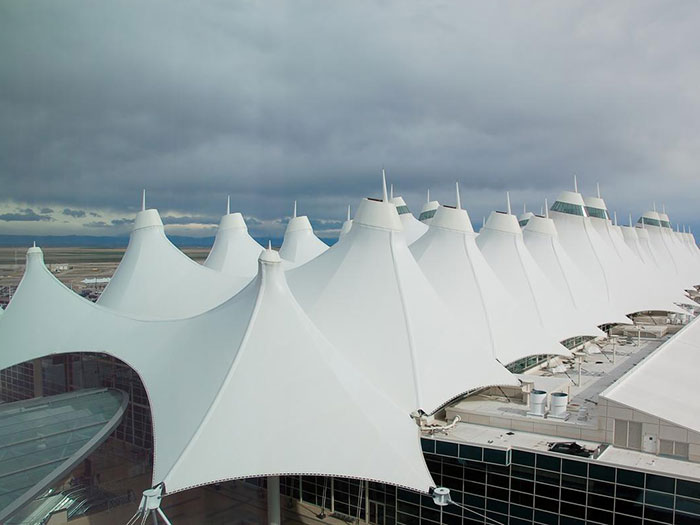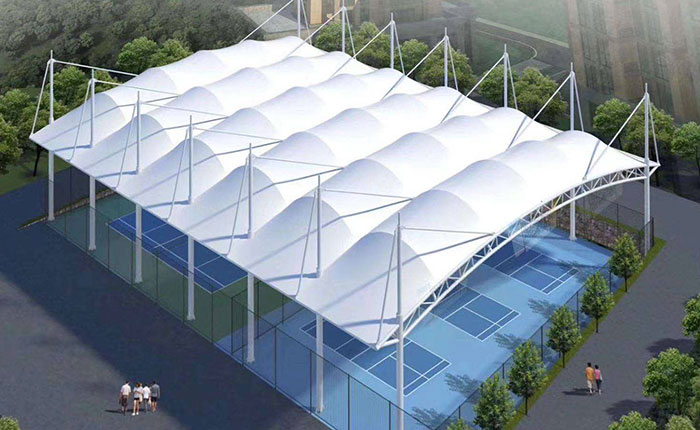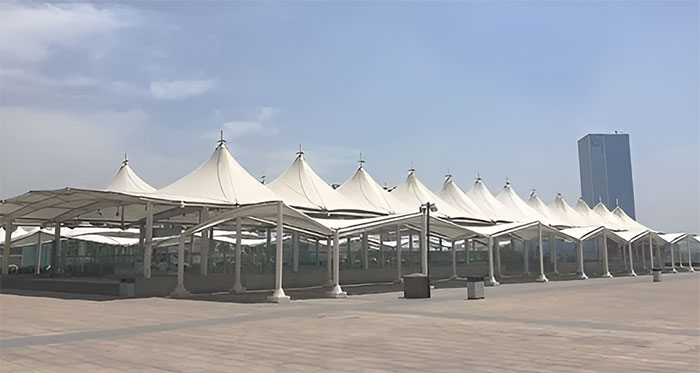Environmental advantages of tensile structure systems
Against the backdrop of the global promotion of sustainable development, the construction industry is facing unprecedented challenges and opportunities. As an innovative architectural concept, sustainable architecture is committed to minimizing the negative impact on the environment while meeting human living and use needs. As an important component of sustainable architecture, the tensile structure systems have demonstrated significant environmental advantages with its unique design and construction methods.
What is a tensile structural system?
The tensile structure system combines high-strength steel cables or other flexible materials with a rigid support structure, using the tension of the cables to maintain the stability of the structure. This structural form is light and flexible, and can create unique and dynamic architectural forms. Common tensile structures include membrane structures and cable dome structures, which are widely used in large public buildings such as stadiums, exhibition halls, and airport terminals.

Environmental advantages of tensile structure system
Material saving
Use of lightweight materials: The tensile structure systems uses a large amount of lightweight materials, such as membrane materials, steel cables, etc. Compared with traditional building structures, the amount of these materials used is significantly reduced, thereby reducing energy consumption and environmental damage during the mining, processing and transportation of building materials. For example, the weight of the membrane structure is only a few tenths of that of traditional building roofing materials, which greatly reduces the deadweight of the building structure and reduces the scale of foundation engineering and material usage.
Efficient use of materials: The design of the tension structure system is based on mechanical principles, which can give full play to the mechanical properties of materials and make efficient use of materials in the structure. Through reasonable tensioning and arrangement, cables and membranes can withstand greater loads, meet the strength and stability requirements of the structure with a smaller material cross-section, and avoid material waste.
Energy efficiency
Natural lighting and ventilation: Tensile structure systems usually have large spatial spans and transparent shapes, which are conducive to natural lighting and ventilation. The film material has a certain light transmittance, which can allow sunlight to penetrate evenly into the room, reducing dependence on artificial lighting during the day and reducing energy consumption. At the same time, reasonable building layout and ventilation design can use natural wind to circulate indoor air, improve indoor air quality, reduce the use of air-conditioning systems, and further save energy.
Thermal insulation performance: Some advanced membrane materials have good thermal insulation performance, which can effectively block solar radiation heat from entering the room and reduce the cooling load of air conditioners in summer. In winter, the tensile structure system can reduce indoor heat loss and improve the energy efficiency of the building through proper insulation measures.
Environmentally friendly
Recyclable and degradable materials: The membrane materials used in some tensile structure systems are made of recyclable or degradable materials. When the building’s service life ends, these materials can be recycled and reused, reducing the generation of solid waste and reducing pressure on the environment. For example, some new bio-based membrane materials can gradually degrade in the natural environment after being discarded and will not cause pollution to the soil and water sources.
Low impact on the surrounding environment: The construction process of the tension structure system is relatively simple, the construction period is short, and the interference to the surrounding environment is small. Compared with traditional construction, it reduces the emission of pollutants such as noise and dust, and reduces the impact on the lives of surrounding residents and the ecological environment. At the same time, the tension structure system can better integrate with the natural environment, and its unique shape can become part of the urban landscape and enhance the environmental quality of the city.
Sustainable development adaptability
Flexibility and scalability: The tensile structure system is highly flexible and scalable, and can adapt to different functional requirements and site conditions. During the use of a building, if the space needs to be adjusted or expanded, the tensioned structure can be modified and upgraded relatively easily, extending the service life of the building and reducing the waste of resources and environmental damage caused by demolition and reconstruction.
Responding to climate change: As climate change intensifies, buildings will need to become more adaptable. The lightweight and flexible characteristics of the tensile structure systems give it certain advantages in dealing with natural disasters such as earthquakes and strong winds. At the same time, its good lighting and ventilation performance helps the building maintain a comfortable indoor environment under different climatic conditions and reduce the increase in energy consumption caused by extreme climate.

Case Study
Take a large sports stadium as an example. The stadium uses a tensile membrane structure. The light transmittance of the membrane material enables the venue to make full use of natural light during the day, greatly reducing electricity consumption for lighting. According to statistics, the venue can save about 30% of lighting energy each year compared with traditional buildings. At the same time, the thermal insulation performance of the membrane material effectively reduces the indoor temperature in summer, reducing the use time and energy consumption of air conditioning. During the construction process, due to the fast construction speed of the tensile membrane structure, the impact on the surrounding environment is small, and the construction noise and dust pollution are significantly lower than traditional construction methods. In addition, the venue’s membrane materials can be recycled and reused after their service life ends, meeting the requirements of sustainable development.

As an important part of sustainable construction, the tensile structure system provides new ideas and solutions for the sustainable development of the construction industry with its significant advantages in material saving, energy efficiency, environmental friendliness and sustainable development adaptability. Solution. With the continuous advancement of science and technology and the innovative development of materials, tensile structure systems will be applied in more construction fields and play an important role in creating a greener, more environmentally friendly and sustainable building environment. In future building design and construction, the tension structure system should be further promoted and applied to give full play to its environmental advantages and jointly promote the construction industry to move towards sustainable development.